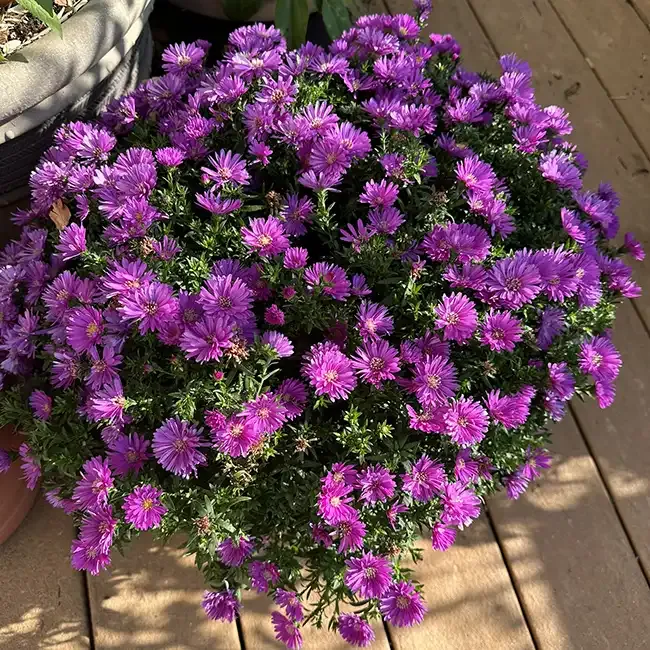
The Aster, a member of the daisy family (Asteraceae), is a beloved perennial known for its star-shaped flowers that bloom in late summer and early fall. With a wide variety of colors, including purples, blues, pinks, and whites, Asters brighten up the garden when many other plants are finishing their bloom cycle. Their value extends beyond aesthetics, as they play a vital role in supporting pollinators during the late growing season.
Aster as a Pollinator Attractor
One of the standout features of the Aster is its ability to attract a wide range of pollinators. Bees, butterflies, and other beneficial insects flock to Asters, making them a crucial plant for maintaining biodiversity in the garden. In particular, Asters are essential for pollinators in late summer and fall when many other food sources have diminished. Monarch butterflies, in particular, seek out Asters as they prepare for their long migration, and the flowers are also frequented by native bee species.
Late-Season Bloomer
Asters are celebrated for their late-season blooms, offering vibrant colors when most gardens begin to fade. Blooming from August to October, they provide a continuous display that can last through the first light frosts of autumn. This extended bloom time makes them ideal for filling gaps in the garden and ensuring visual interest during the cooler months.
Their late flowering also makes them a crucial plant for pollinators that require late-season nectar to sustain themselves through colder months or long migrations.
Tips for Growing Asters
- Choosing the Right Variety: There are many types of Asters, ranging from compact plants that reach about a foot in height to taller varieties that can grow up to six feet. Popular types include New England Aster (Symphyotrichum novae-angliae) and New York Aster (Symphyotrichum novi-belgii). When selecting an Aster, consider the space available in your garden and the color scheme you desire.
- Sunlight Requirements: Asters thrive best in full sun but can tolerate light shade. For optimal flowering, ensure they receive at least six hours of sunlight each day.
- Soil Conditions: These flowers prefer well-draining soil. They can grow in a variety of soil types but do best in slightly acidic, loamy soil. If your soil is heavy, amend it with compost to improve drainage.
- Watering: Asters need consistent moisture, especially during their growing season. Keep the soil evenly moist but avoid waterlogging, which can lead to root rot. Once established, Asters can tolerate short periods of drought, though they will perform best with regular watering.
- Spacing and Air Circulation: Proper spacing is essential to prevent fungal diseases like powdery mildew. Space the plants according to their mature size, generally about 1 to 3 feet apart, depending on the variety.
- Deadheading and Pruning: Deadheading (removing spent flowers) can encourage more blooms and extend the flowering period. Prune Asters in early summer to promote bushier growth and more blooms. Cutting back the plant by about one-third can also help manage taller varieties that may become leggy.
- Dividing Plants: Asters benefit from being divided every two to three years to prevent overcrowding. Dividing not only keeps the plants healthy but also gives you more Asters to spread throughout your garden.
- Winter Care: In colder regions, Asters are hardy, but it’s a good idea to leave the dried stems in place over winter. This helps protect the plant's crown and provides shelter for beneficial insects. In early spring, trim back the old growth to make way for new shoots.
Asters are a must-have for gardeners looking to extend their garden’s bloom time and support pollinators well into the fall. Their wide range of colors, easy maintenance, and ability to attract beneficial insects make them a valuable addition to any garden. By following these growing tips, you can enjoy vibrant Aster blooms year after year.
